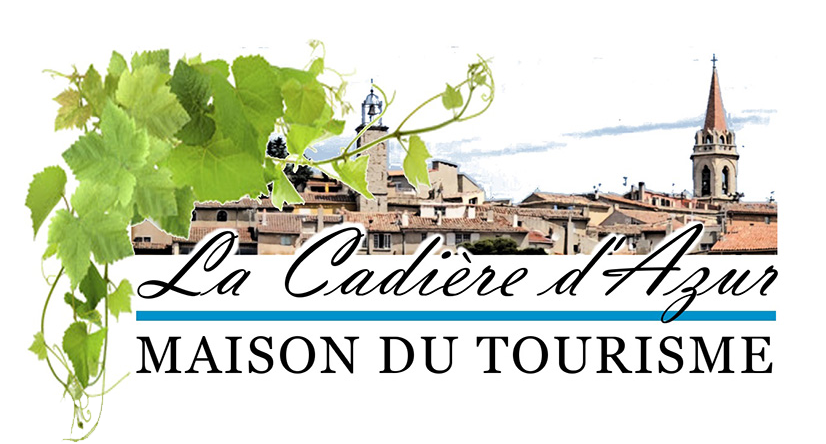The territory of La Cadière d’Azur has been frequented since Neolithic times, this being attested by the serpentine or diorite axes and adzes, and the chipped blades and artefacts that have been found in the “Luquettes” and “Paluns” districts as well as by the scarce moulded earthenware fragments discovered in the “Fontanieu” district.
No tangible traces of the Bronze Age men have been found yet.
But, on the other hand, during the first Iron Age, from the VIIth to the VIth century BC the territory was occupied by Celtoligurian Camatulici tribesmen whose high perched dwellings (Oppida) among the most important in Southern France, were located near Ollioules (La Courtine) and Sanary (Mont Garou) both at a short distance from La Cadière.
Facing this Mont Garou Oppidum and related to it, a small settlement going back to those days has recently been discovered and the pottery fragments it displayed dated back to the last quarter of the VIth century BC. This is the oldest sedentary habitat ever found on the territory of La Cadière. There appear the first Massalian and Etruscan potteries bearing testimony of the trade between local tribes and Marseilles’s Greek merchants, but perhaps also giving evidence of piracy at the expense of these same Phocean merchants by Celtoligurian rovers.
In the course of the following centuries, during the second Iron Age, the increasing population settled in the plains and the vales where the oldest identified dwellings go back to the beginning of the IInd century BC, in the “Paluns” and “St Jean” districts.
With the Roman implantation following the demand for help from the Massalians because of their incessant quarrels and fights with the local tribes, the unfortunate siding of the Massalian city with Pompeius during the Roman Civil War of the second half of the Ist century BC and finally with the economic development of the Provincia under Augustus, the Cadieran territory will be densely populated. The land was surveyed (traces of this survey can still be seen in the “Paluns” plain) and rich and luxurious villae will be built, such the “Madrague” one in St Cyr, the “Olivette” and “Vigneret” ones in Le Castellet or the “Pey Neuf” in La Cadière. On this particular site a funerary mausoleum stood until 1750 when it was pulled down and its beautiful stones sold (hence the name of ”Belles Pierres” the district presently bears). In the neighbourhood of those villae belonging to wealthy Romans or romanized “natives” rose humble farms such as “Les Boeufs”, “Les Hautes” or “Les Marquands”.
In the adjoining districts of “Les Paluns and “La Pinède” right at the foot of La Cadière, in the plain, most certainly stood an anonymous rural village, a vicus, the probable ancestor of La Cadière and perhaps also Le Castellet.
The flourishing economy of the time was based on vine-growing and stock breeding of course but also on olive growing and the making of this oil the use of which was so important in Roman times.
At the end of the IIIrd century AD, economical, political and military crisis half ruined the Roman Empire and the first Barbarian invasions added their destructions to it, and the small village that would, one day, give birth to La Cadière was not spared. The country lost a great part of its population; farms and villae were deserted or reduced in size, the once-thriving economy reverted back to a mere subsistence one, around surviving though well-diminished dwellings such as those of “Le Pey Neuf”, “Les Paluns”, “L’Olivette”, ”Le Vigneret”, “Fontanieu” or “St Côme”. One site only appears to have been more intensely inhabited and this up to the VIIth – VIIIth century AD at least.. Otheformer inhabitants of the plain went back to their ancestral habits and re-settled on top of the hills. This is the origin of the present perched villages of La Cadière and Le Castellet. Unsafe and its soil no longer worked, the plain will remain in total neglect and the draining of the lowlands having ceased to be ensured they will go back to their previous state,that of marshes (hence the name of Paluns =from the latin word :Palus).
The village will live sparcely in a reduced economy until the Xth century AD when the end of the Saracene raids and looting allowed a return to safety and to a growth economy in the bosom of the “mother” and suzerain (Cathedra) Abbey of St Victor of Marseilles. Hence the name given from that time to La Cadière = CATHEDRA, which gradually, following the ups and downs of the language, changed into Caderia, then Cadiera, while keeping its symbolic meaning of “Cathedre” (which the bishop or the abbot’s wooden high-backed chair on the town’s coat of arms brings to mind).
Jean-Michel THEVENY
